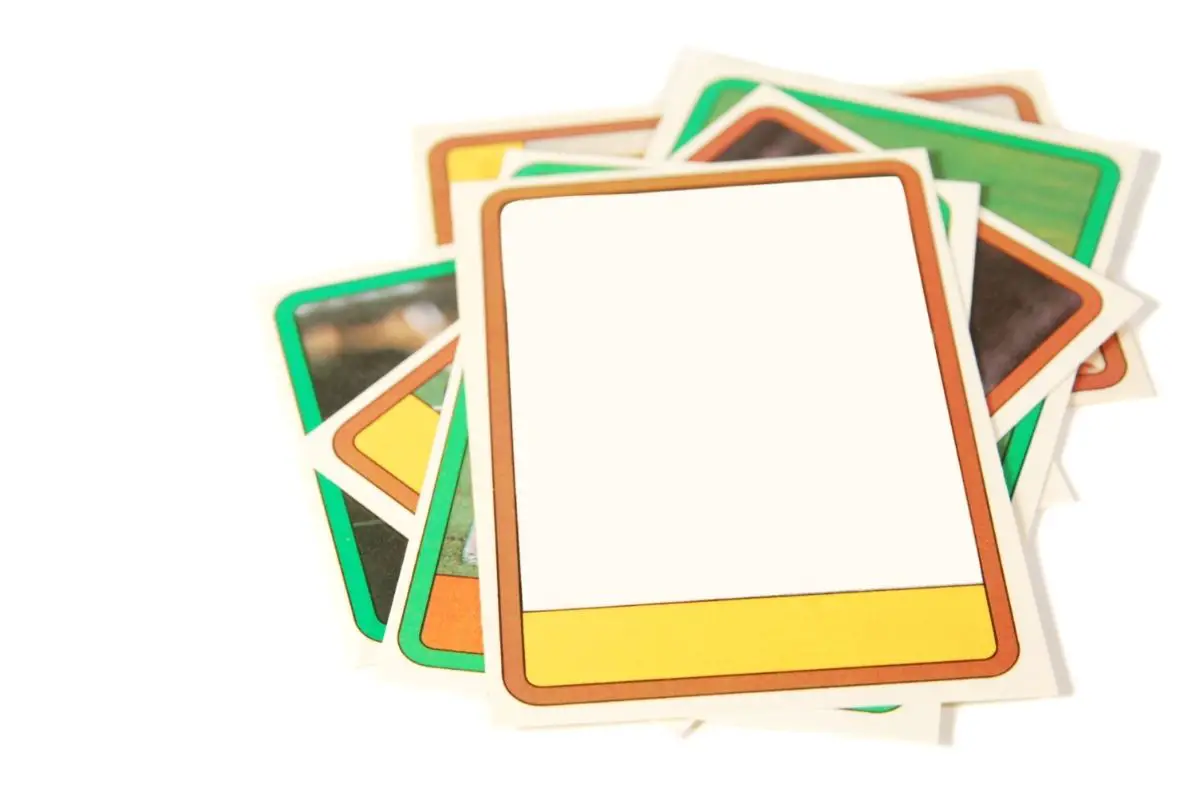Once you rip open a box of sports trading cards and see the light shine back at you from one, you know you have found a refractor.

These special types of sports trading cards were introduced by Topps in 1993 and provide a veritable thrill when you find one.
They should be rare and found in several color variants yet you may want to ‘complete the rainbow’ set for your favorite player.
In this guide, we will look at what is classed as a refractor card, which refractor cards to look out for, and are refractor cards worth more?
What Is Classed As A Refractor Card
Refractor cards should leap out at you as soon as you see one. This is a trading card that comes with a reflective coating and if you hold it up at an angle you should see a rainbow of color, as it refracts light hence the name.
They were first introduced in 1993 with the release of the Topps Finest Baseball set though you do not need to rely on appearances alone to confirm you are holding a refractor card.
The rear of the card should give you an indication of its status and subsequent releases have an ‘R’ or the word ‘Refractor’ printed on the rear to confirm it.
Look beneath the card number or beside it and you should see that cherished confirmation.
Other sports card brands, aside from Topps, have tried to replicate the enhanced appearance of their cards and the light refraction, but do note that these brands cannot use the same term, ‘refractor’.
Which Refractor Cards To Look Out For
The very early refractor cards from the earliest set failed to include the ‘R’ or ‘Refractor’ designation.
Not only does their early status make them highly valued but also the fact that it is harder to clarify them from base issues.
Aside from the color variants, there are some special appearances that you should look out for including Prism, Wave, Negative, XFractor, and Superfractor.
If you were to look out for refractor cards, it may be easier to look for different variants of a certain player.
By collecting all the refractor variants for that one player, in a single set, such completion should turn out to be a sound investment.
Should you get a complete set of refractor cards for a rookie player that then goes on to Baseball Hall of Fame notoriety then that should be worth keeping hold of.
It can be difficult to ascertain the rarity of a card if the sports card brand fails to disclose how many of them are in existence.
However, refractors are rare simply because you can expect to see fewer of them compared to base cards when you rip open a box.
The scarcity of certain variants may be indicated by a limited number and that would make it even harder to complete a full rainbow of those refractors for your favorite player.
Are Refractor Cards Worth More?
Due to being a special class of sports cards, the refractors should be worth more than your typical base card which stands to reason.

However, just as the ‘junk wax era’ diminished the value of sports trading cards en masse, refractor cards were overproduced and their value also decreased.
Typically, rookie refractor cards tend to go for a premium price over a non-refractor card. The higher the status of the player, the more you can expect the card to go for, especially Superstar refractor rookies.
Since their introduction in 1993, refractor cards can now claim to be the most sought-after sports trading cards. That’s across the board, not just for those official refractor cards which were produced by Topps.
Even though Panini cannot call their cards ‘refractors’, their Prisms are still classed as refractors due to how they are made.
A loose guide to the value of some refractor cards may be done by simply checking on an auction site such as eBay.
While the base cards will command a negligible value, you should see refractors and various color variants typically go for more of that same card.
Once you hit the numbered and limited ranges then that value should increase even more, sometimes to five figures for a certain player.
Final Thoughts
Since their introduction by Topps in 1993, refractor cards have been sought after in sports trading cards.
While only Topps is allowed to use the term ‘refractor’, other brands have cottoned on and introduced their own reflective coatings and color variants.
If you do have a few in your collection, it may be worth trying to ‘complete the rainbow’ set for a specific player by collecting all those color variants.
Refractor cards are certainly worth more than base bards, but that difference largely depends on the rarity of a certain variant.
Frequently Asked Questions
Are Other Sports Card Brands Allowed To Use The Term ‘Refractor’?
No, as the term ‘Refractor’ effectively belongs to The Topps Company, Inc. They introduced the cards in 1993 and the actual term ‘Refractor’ is a registered trademark of theirs.
Other sports card brands can attempt to replicate the heightened effects and appearance of a select few of their cards but they cannot use that specific term.
Examples of imitations include Reflectors, which are made by Press Poss, Mirrors from Leaf, and Prisms by Panini.
What Color Variants Of Refractors Are There?
A lot of the variation in Refractors comes from the colors which are used. You can expect to find black, green, orange, red, blue, and gold though rarer examples of the color variation include white, purple, and pink.
The rarest color variations are typically red and orange which should have low serial numbers. Judging by the serial numbers, variations in green and blue are comparatively more common though this can vary between sets.
- Mac Jones Rookie Cards – Our favorite picks - October 21, 2022
- FOTL Sports Cards: What It Means, And Why You Should Care - October 17, 2022
- Best Picks For Juan Gonzalez Rookie Cards - October 3, 2022


Very informative, thank you.